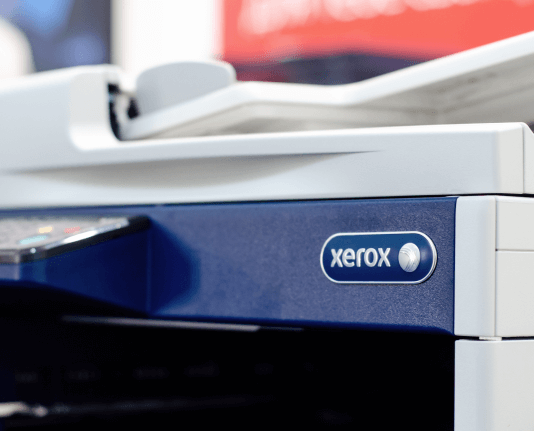Maximize Efficiency with Pipeline SCADA Alarm Management
See airSlate SignNow eSignatures in action
Our user reviews speak for themselves






Why choose airSlate SignNow
-
Free 7-day trial. Choose the plan you need and try it risk-free.
-
Honest pricing for full-featured plans. airSlate SignNow offers subscription plans with no overages or hidden fees at renewal.
-
Enterprise-grade security. airSlate SignNow helps you comply with global security standards.

Pipeline SCADA Alarm Management
User Flow for airSlate SignNow:
airSlate SignNow empowers businesses to send and eSign documents with an easy-to-use, cost-effective solution. It offers a great ROI with a rich feature set that fits any budget. The platform is easy to use and scale, tailored for SMBs and Mid-Market. The transparent pricing ensures no hidden support fees or add-on costs, along with superior 24/7 support for all paid plans.
Experience the benefits of airSlate SignNow today and streamline your document workflow!
airSlate SignNow features that users love
Get legally-binding signatures now!
FAQs online signature
-
What are the three 3 types of SCADA?
SCADA system architecture has been categorized in four type or generations: First generation – early (monolithic) SCADA. Second generation – distributed SCADA. Third generation – networked SCADA.
-
What is SCADA security?
What Is Scada Security? SCADA security protects SCADA networks and prevents vulnerabilities from being exploited by cyber criminals. SCADA networks are used to control and monitor vital systems and infrastructure, so SCADA security is crucial to safeguarding these services.
-
What is SCADA and how it works?
What does SCADA stand for? Supervisory Control and Data Acquisition (SCADA) systems are used for controlling, monitoring, and analyzing industrial devices and processes. The system consists of both software and hardware components and enables remote and on-site gathering of data from the industrial equipment.
-
What is the SCADA system for pipeline?
Pipeline SCADA is a system for transmitting the information and data necessary for the operation of the pipeline facility via communication networks. The SCADA system can perform m onitoring / control of the pipeline system from a remote centralized control room.
-
What are the levels of SCADA alarm?
The severity level usually indicates the importance of the alarm. The default severities are Critical, High, Medium, and Low. These form a range—Critical alarms are usually regarded as the most important and Low alarms are the least important. You can change the names of these severity ranges if required.
-
What is SCADA alarm system?
Supervisory Control and Data Acquisition (SCADA) systems can integrate data from motion sensors, security lights, window/door alarms, surveillance cameras and other security equipment alarms.
-
Are alarms indispensable in SCADA system?
In industrial automation, SCADA (Supervisory Control and Data Acquisition) systems are crucial in monitoring and controlling various processes. One vital aspect of the SCADA system is alarm management, which ensures prompt identification and response to critical events.
-
What are the levels of SCADA alarm?
The severity level usually indicates the importance of the alarm. The default severities are Critical, High, Medium, and Low. These form a range—Critical alarms are usually regarded as the most important and Low alarms are the least important. You can change the names of these severity ranges if required.
Trusted e-signature solution — what our customers are saying
Related searches to make a sign
How to create outlook signature
the SCADA acronym stands for supervisory control and data acquisition when considering this term you can conjure varying images and you should before we get started on today's video if you love our videos be sure to click the like button below then make sure to click Subscribe and the little bell to receive notifications of new real Parrs videos this way you never miss another one a SCADA system is a collection of both software and hardware components that allow supervision and control of plants both locally and remotely the SCADA also examines collects and processes data in real-time human machine interface or HMI software facilitates interaction with field devices such as pumps valves motors sensors etc within the SCADA software is the ability to log data for historical purposes the structural design of a standard SCADA system starts with remote terminal units or RT use and/or programmable logic controllers or PLC's as you know our tea use and plcs or micro processors that communicate and interact with field devices such as valves pumps and HMIS that communication data is routed from the processors to the SCADA computers where the software interprets and displays the data allowing for operators to analyze and react to system events before SCADA plant personnel had to monitor and control industrial processes via selector switches push buttons and dials for analog signals this meant that plants had to maintain personnel on site during production in order to control the processes as manufacturing grew and sites became more remote to nature relays and timers were used to assist in the supervision and control of processes with these devices employed fewer plant personnel were required to be on-site in order to oversee and control operations while relays and timers did provide some level of automation the panels required for these devices took up valuable real estate troubleshooting was a nightmare and reconfiguring was difficult at best these issues in conjunction with the need to grow even larger industrial plants helped to facilitate the birth of automation as you may know from previous videos controlling industrial plants via processors became a reality in the 1950s gas and oil utilities and manufacturing were major users of these new technologies and supervisory control about a decade later telemetry came on the scene to offer even more remote capabilities with automated communication and data transmission to remote monitoring locations another decade later the term SCADA was used to describe systems with PLC's and micro processors that were being used for the monitoring and control of automated processes on an even greater scale than ever before SCADA back then was anything but practical there were colossal machines mainframes really and since networking was not yet in the picture they were standalone units in the next couple of decades the 80s and 90s with computer systems getting smaller the advent of local area networking or LAN and HMI software SCADA systems were able to connect to related systems unfortunately though the communications were typically proprietary which meant that connections outside of the particular vendor of the SCADA system were not allowed this early SCADA was coined distributed SCADA systems later in the 90s and 2000's SCADA began to implement open system architectures with communication protocols that were not vendor specific as you can imagine this opened up skaters ability to connect with varying vendors this newer more improved SCADA was then called a networked SCADA system newer and improved skate up unfortunately didn't last long with computer technology growing rapidly IT development quickly gathered steam the default database for IT became structured query language or SQL databases SCADA developers didn't implement these standard databases so SCADA became out-of-date rather quickly when other technologies so rapidly changed current-day SCADA systems have adapted to the changing technologies and have a great advantage over the older SCADA systems with the adoption of modern IT standards such as SQL and web-based applications today SCADA allows for real-time plant information to be accessed from anywhere around the world having this data the operators fingertips facilitates improved plant operations allowing for responses to skate a system cues based on field collected data and system analysis these operator interactions can be from a computer right on the plant floor to an office building in some other region in the world advancing technologies have indeed made the world seem like a very small place relatively speaking and because the current SCADA system software is typically adopted the SQL database model historical collection of data may be logged and used in trending applications to further improve plant processes as well as creating mandated record-keeping for some of the industries out there essentially SCADA is a collection of hardware and software components this collection of components begins with real-time data collected from plant floor devices such as pumps valves and transmitters these components don't have to be from a particular vendor they just need to have a communication protocol that the processor can utilize data collected from the field devices is then passed to the processors such as PLC's from the processor the data is distributed to a system of network devices these devices may be HMIS and user computers and servers on the HMI and end-user computer graphical representations of the operations exist for operator interactions such as running pumps and opening valves this data may also be analyzed and used to enhance plant production and troubleshoot problems want to learn PLC programming in an easy-to-understand format and take your career to the next level head on over to real parse com [Music] [Music] you
Show moreExplore other deals cases
- Boost Your Sales Funnel for SaaS with airSlate SignNow
- Revolutionize Your Deal Management in CRM with airSlate SignNow
- Streamline Your Funnel in Sales with airSlate SignNow
- Streamline Your Deal Pipeline with airSlate SignNow
- Revolutionize Your Workflow with our Deal Management System
- Streamline Your Document Workflow with airSlate SignNow Dealpath Software
- Boost Lead Conversion Rates with airSlate SignNow
- Streamline Your Deal Pipeline Management with airSlate SignNow



























